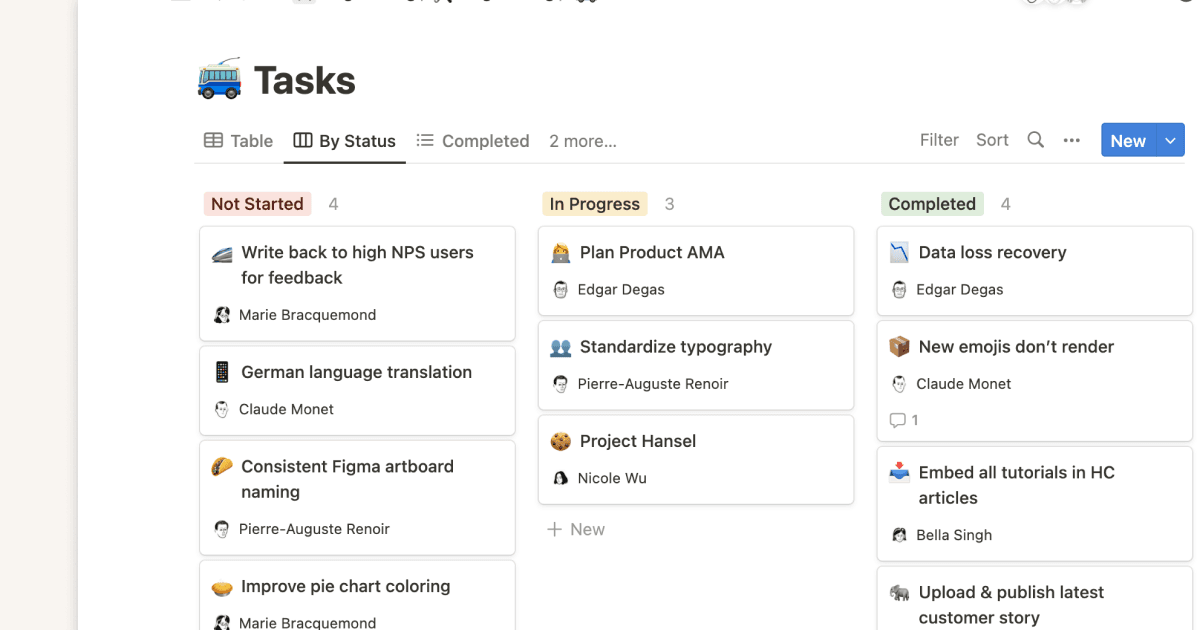Idea Pad - a system for capturing product ideas

템플릿 설명
A process for capturing and validating ideas
In the Idea Pad, ideas are placed in 4 stages:
Inbox: this is where I collect any new ideas that I come across. Each new idea creates a card with 8 questions I need to answer before I can move the card to any other stage. Capturing ideas also works with Notion’s Web Clipper. As a bonus, I get the link to the page I had the idea on for additional context.
Go Validate: If at the end of answering the 8 questions, I think it’s an idea worth validating, I move it here. If not, it goes into the Dead category.
Validated: Ideas that went through my validation process, and I can start building them.
Dead: Ideas I discounted from the inbox or after an unsuccessful validation.
Evaluating the idea
Before I commit time to validate an idea, I want to asses if it's any good. I’ve borrowed and adapted a set of questions from Tyler Tringas and his meat grinder approach to startup ideas. Each question makes me think deeply about the idea and spot any weak points.
Questions:
- Describe the problem: what is my understanding of the problem people have?
- Describe the solution: what is my solution to their problem?
- Benefits to users: list the benefits of using my solution.
- Is anyone paying to solve this problem today: check if there is a market for this problem. For instance, many people are upset with ads on social networks. No one is, however, paying for an ads-free version of Facebook.
- Possible monetization streams: what’s my hypothesis on how this could be monetized?
- What to validate: based on all of the above, what questions require a positive answer for me to proceed? For instance, do content creators need a dedicated tool for drafting blog posts?
- How to validate: what is the cheapest, fastest way to validate the idea?
- Is it sustainable? Does the economics of this make sense? Can I scale this idea to a point where my time is being paid for?
Rating the idea
To get an initial understanding of how I feel about the idea, I rate it against 4 factors:
- Usefulness: how useful I believe this will be to my users
- Complexity: how hard is it to build this idea?
- Excitement: do I feel like dropping everything and starting working on this right now?
- Product/Founder fit: am I the right person for this idea? Will I enjoy working on this a year from now?
This allows me to compare ideas against each other and prioritize the ones that are more useful, less complex, I’m more excited about and I generally feel they’re a better fit.
Note: As the idea progresses through the system, its rating will change; maybe I’ll realize something is more complex than I initially thought.
Researching
To better organize ideas, I’ve started tagging them. This allows me to reference an entire category of ideas, like ‘Tools for makers’ using Notions built-in filters. It’s great for pattern matching, especially when ideas start piling up.
You can come up with your own tagging system. I tend to explore specific trends, and my tags are based on them. Here are some as inspiration:
Tools for makers
- Domains
- Fiverr unbundling
- Newsletters
Every bit of research I do lives on the idea’s dedicated page. Competition research, tweets of frustrated people asking for a solution, and game plan to validate the idea. All this lives in one place and can be referenced in the future.










